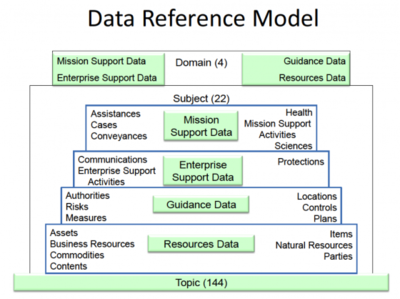Data Reference Model (DRM)
The Data Reference Model (DRM) is one of the five reference models of the Federal Enterprise Architecture (FEA). The DRM is a framework whose primary purpose is to enable information sharing and reuse across the United States federal government via the standard description and discovery of common data and the promotion of uniform data management practices. The DRM describes artifacts which can be generated from the data architectures of federal government agencies. The DRM provides a flexible and standards-based approach to accomplish its purpose. The scope of the DRM is broad, as it may be applied within a single agency, within a Community of Interest (COI), or cross-COI.[1]
The Data Reference Model (DRM) facilitates discovery of existing data holdings residing in “silos” and enables understanding the meaning of the data, how to access it, and how to leverage it to support performance results.[2]

source: The EA Pad
References
Further Reading
- Data Reference Model (DRM) - Overview IBM
- Data Reference Model Draft Version 2.0coverpages.org
- Data Reference Model Law and Legal Definition US Legal
- A perspective on the Data Reference Model as it relates to Cross Agency Challenges omg.org
